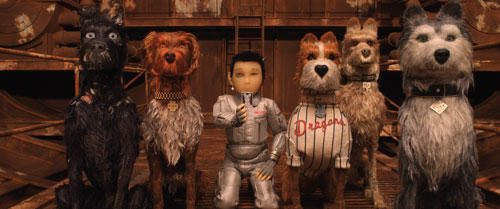Wes Anderson’s new film sees the director return to the stop-motion technique of his 2009 film Fantastic Mr Fox. It is set in a sprawling retro-futuristic fictional Japanese city called Megasaki, switches with ease between English and unsubtitled Japanese, and features a cast of talking dogs voiced by Anderson regulars like Edward Norton and Bill Murray.
Isle of Dogs is as dextrous a piece of filmmaking as anything Anderson’s done: the animation is triumphantly inventive, the art direction typically immersive, and the storyline – a rich confection that sees all dogs in Megasaki exiled to the city’s offshore rubbish tip by the cat-loving mayor – unfurls at a commanding clip.
Anderson is a gifted filmmaker, but I sometimes feel that his prodigious talents are directed towards pretty limited aims: namely the manufacture of a charm so peculiarly distinct I’m surprised the filmmaker hasn’t patent-protected it. And charm’s a funny thing – you either get it or you don’t, and in the case of Isle of Dogs it escaped me entirely.
With a tone fluctuating between storybook fable and knowing pastiche, the film focuses on a band of dogs, infected, like all canines in this dystopian future, with the mysterious snout fever and banished to a municipal dump to satisfy the sinister plans of the autocratic Mayor Kobayashi.

Our canine heroes, led by the worldly stray Chief (voiced with gravelly authority by Bryan Cranston), spend most of their time staving off hunger and fighting with other dogs for scraps (staged, in a break from the film’s tone of cutesy anthropomorphism, as a storm of tooth-and-claw violence). But then Atari, the young orphaned nephew of canine-hating Mayor Kobayashi, crash lands on the island, determined to find his pet dog Spots. Moved by Atari’s mission, the dogs pledge themselves to help him – all except Chief, who joins the mission as grudging participant.










